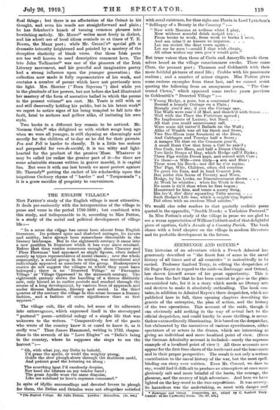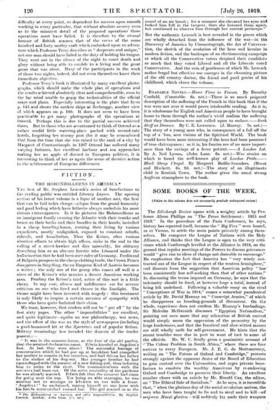ZEEBRUGGE AND OSTEND.*
THE historian of an adventure which a French Admiral has generously described as "the finest feat of arms in the naval history of all times and of all countries" is undoubtedly to he envied. Professor Sanford Terry, in editing the despatches of Sir Roger Keyes in regard to the raids on Zeebrugge and Ostend, has shown himself aware of his great opportunity. This is clear from the fact that he has been content to give us the plain unvarnished tale, for it is a story which needs no literary arts and devices to make it absolutely enthralling. The book con- tains, in addition to Admiral Keyes's three despatches, which are published here in full, three opening chapters describing the genesis of the enterprise, the plan of action, and the history of the two operations. This account of the raids, though it can obviously add nothing in the way of actual fact to the official despatches, and could hardly be more thrilling, is never- theless extraordinarily illuminating. It is based on the deepatches, but elaborated by the narratives of various eyewitnesses, either spectators of or actors in the drama, which are interesting as giving an individual and more localized point of view. (Even the German Admiralty account is included—surely the supreme example of a localized point of view I) All these accounts now appear for the first time shorn of the irrelevant and the inaccurate and in their proper perspective. The result is not only a serious contribution to the naval history of the war, but the most spell- binding sea story ever written. Even Mr. Conrad, we dare to say, would find it difficult to produce an atmosphere at once more gloriously salt and more brimful of the haste, the courage, the glamour, and the secrecy of high adventure. And here we have lighted on the key-word to the two expeditions. It was secrecy. So hazardous was the undertaking, so beset with danger and • Zabrugge and Ostend. Despatches. &o., edited by O. Sanford Terry. Oxford: at t.he University Press. Ids. ad. net.) difficialty at every point, so dependent for success upon smooth working in every particular, that without absolute secrecy even 83 to the minutest detail of the proposed operations these operations must have failed. It is therefore to the eternal honour of British seamen that Of the crews of the some hundred and forty motley craft which embarked upon an adven- ture which Professor Terry describes as "desperate and unique," not one man should have failed in the duty.- of holding his tongue. They went out in the silence of the night to court death and glory without being able to confide to a living soul the great game that was afoot. Many of the participants in the work of those two nights, indeed, did not even themselves know their immediate objective.
Professor Terry's book is illustrated by many excellent photo- graphs, which should make the whole plan of operations and the results achieved absolutely clear and comprehensible, even to the lay mind unable to grasp the technicalities of the official maps and plans. Especially interesting is the plate that faces p. 145 and shows the sunken ships at Zeebrugge, another view of which appears on p. 160. It does not seem to have been practicable to get many photographs of the operations at Ostend. Perhaps this is due to the partial success achieved there. But to those who are accustomed to think of Ostend as a rather sordid little watering-place packed with second-rate hotels, forgetting her stormy past (for it may be remembered that from the time that she was raised to the rank of a city by Margaret of Constantinople in 1267 Ostend has suffered many varying fortunes, her excellent harbour and sea approaches making her an apple of discord in European politics), it is interesting to think of her as again the scene of decisive action in the arbitrament of European differences.



































 Previous page
Previous page